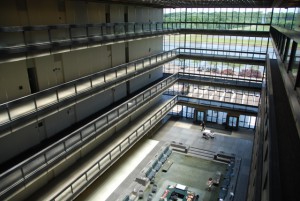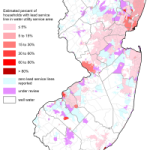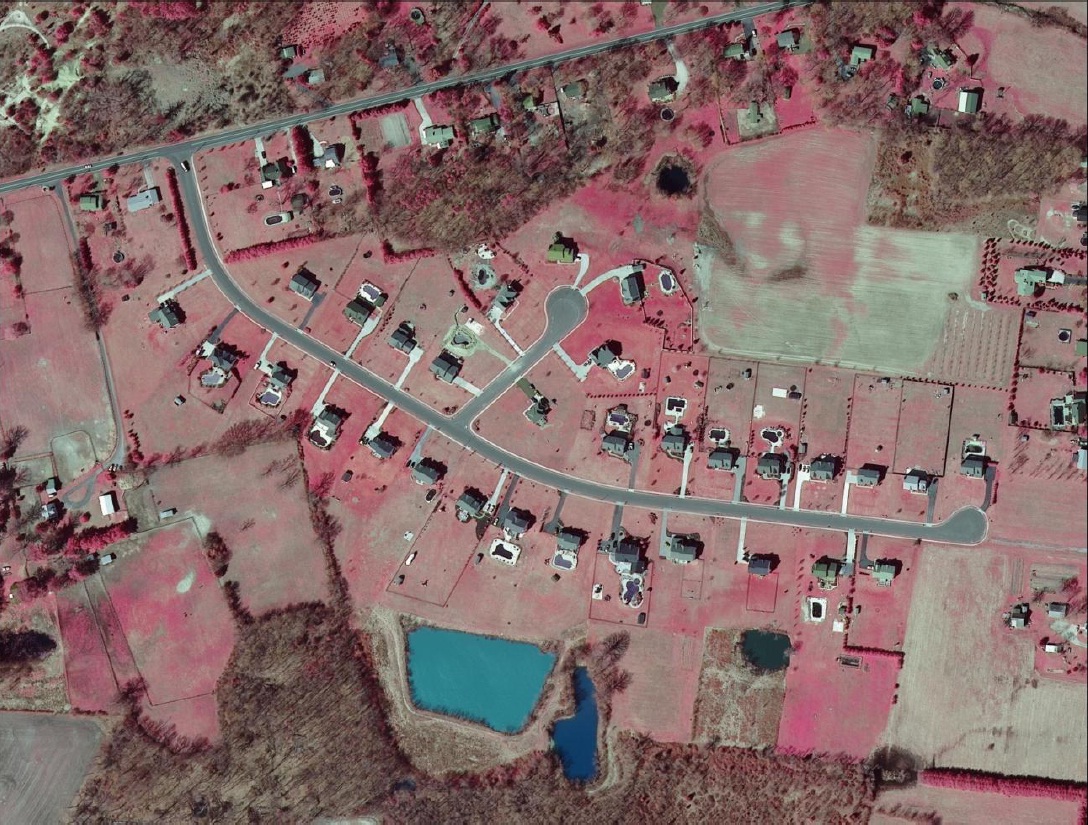New Jersey Future Blog
Bell Labs Redevelopment a Sign of the Future
July 24th, 2014 by New Jersey Future staff
This article was written by New Jersey Future intern Kevin Burkman.
On June 24, 2014, in the atrium of the Bell Labs facility in Holmdel, the Urban Land Institute (ULI) sponsored a conference focused on the redevelopment of this facility, as well as the challenges faced when attempting to repurpose the many outdated office campuses scattered across the suburbia.
In 1961, Bell Labs opened its massive research facility in Holmdel. Designed by architect Eero Saarinen and set on 473 acres, the two-million-square-foot facility once housed over 5,000 employees and in the ensuing four decades would play a large role in the development of transistors, lasers, cell phones and fiber-optic communications. This facility, and many others like it, would transform the American landscape for decades, as office campuses sprang up along highways, far from urban cores and public transportation, in search of low taxes and inexpensive land.
However, it appears this period in suburban land use history is coming to an end, as drastically changing demographics and technology have turned these outmoded facilities into what were called at the conference “stranded assets.” The Bell Labs facility, acquired by Alcatel-Lucent in 2006, was closed in 2007 and has been vacant since then.
The introductory speaker for the ULI event, James Hughes, dean of Rutgers’ Edward J. Bloustein School of Planning and Policy, discussed emerging technologies and demographic changes over the past 50 years, and how they have contributed to land-use changes. The most profound change occurred with the advent of the Internet, he said, followed quickly by advances in wireless technology, which “untethered” many workers and lessened the need for traditional office space. According to Hughes, we are now in a period of spatial and economic rearrangement, an era of “new normals.” The Millennial generation – workers aged 20 to 30, working in a wireless world – desires modern, open workspaces in urban areas, with ready access to public transportation. Decades-old office space located miles from walkable, round-the-clock urban activity does not appeal to them.
The middle part of the program featured speakers involved with redevelopment of these suburban office spaces, including developers, real estate analysts, attorneys and municipal leaders. The focus of their discussion was the extremely difficult nature of redeveloping or repurposing large office campuses that are 30 to 50 years old. Of particular concern are the municipalities in which these facilities are located, which suffer from the loss of population and tax base, sometimes for decades, when a closure occurs. Speakers pointed out that, despite those losses and changing demand, these municipalities tend to continue to adhere to single-use zoning at these sites. New demographics, technology and economics have rendered these positions on land use archaic, and speakers emphasized that adhering to them is unlikely to lead to new development or reactivation of the sites.
The program concluded with discussions about Somerset Development’s upcoming transformation of the Holmdel facility. Ralph Zucker, president of the firm, related some of the issues faced with repurposing the site, including zoning changes needed for a multi-use development, long-term tax exemptions, and developing trust among developers, the municipal government and residents. He then described the just-begun $100 million redevelopment project, including the creation of office, retail, health/fitness, and hotel spaces, and the simultaneous preservation of many of the historical aspects of the research center, including the massive atrium and glass façade.
The event ended with a tour of the facility, giving participants a look some of the elements that made it famous (cruciform atrium, research labs, theater), while construction all around served as a reminder of its new purpose and future.

















